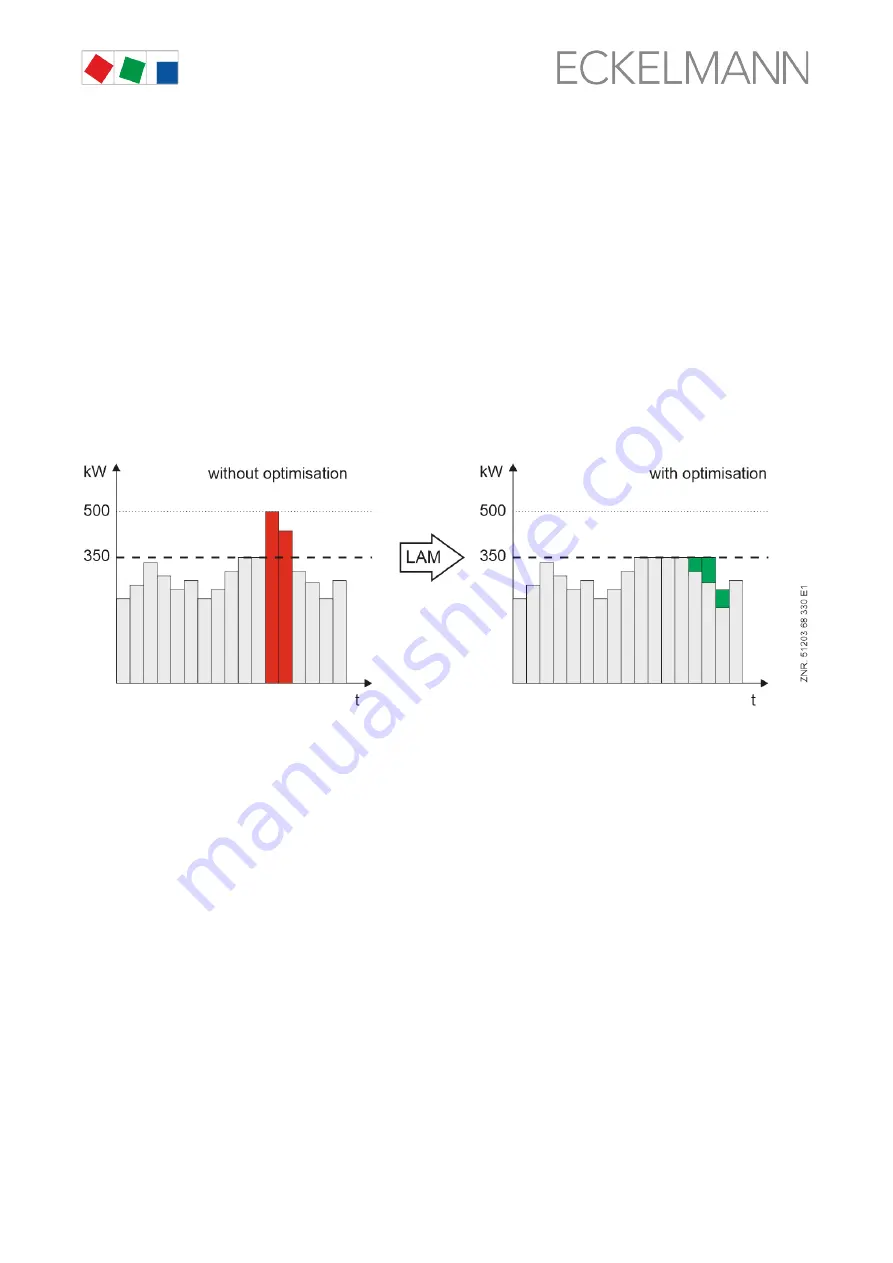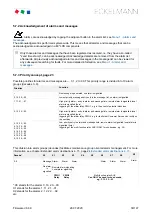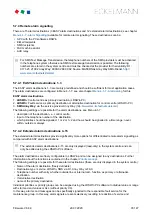
Firmware V6.6.9
29.07.2020
36/147
5.8 Energy management
If the digital inputs of the system centre and/or those of any of its SIOX extension modules for energy
management are configured as S0 measuring points (Menu 4-1-6) or M-bus measuring points are used (Menu
4-1-6), energy consumption, capacity, water or gas consumption etc. can be recorded. During evaluation of the
tariff signal provided by the power company, the work performed can be recorded, evaluated and displayed
separately according to normal tariff and peak tariff. The recorded daily consumption is archived over one year
and the capacity is archived over one week. These are displayed as graphs in Menus 6-1 and 6-2.
5.8.1 Load Shedding Manager (LSM)
The task of a load management system is to minimise the average recorded demand over a 15 minute period
(and thus also the demand charge), without impairing operating processes. This means the load peaks should
be kept as low as possible by briefly unloading or throttling appropriate consumers in peak periods and loading
others in off-peak periods. It should mainly be ensured that the current capacity does not continuously /
significantly exceed the specified maximum capacity (contract capacity). Consumers are unloaded using SIOX
relay outputs and via DDC (Digital Direct Control).
The LSM operates as peak demand monitor whose control limits are oriented to the current power demand
within a measured period. It compares setpoint and actual power at a fixed interval (15 minutes, synchronised
with power company) and initiates the load shedding if required.
It shows 20 load shedding stages that are prioritised in ascending order starting with stage 1. If load shedding
is required, Stage 1 is shed first. If insufficient reaction is caused as a result of this, the next Stage (2.. 20) is
triggered. This strategy is continued until either the power consumption falls into the neutral zone or the highest
load shedding stage is reached (escalation strategy).
After any restart, the LSM initially operates unsynchronised and sheds load when exceeding the maximum
capacity. The energy and demand metering does not run synchronised with the power company until the next
synchronising signal from the power company.
The available and appropriate consumers for the load shedding can be freely assigned to each load shedding
stage. The LSM can act on any consumers on the building control system via floating relay outputs on its SIOX
and via DDC (Direct Digital Control).
It is also expedient to set up a feedback signal via a digital input (parameter
Betriebseingang)
for individual
consumers that are unloaded using SIOX relay outputs. The LSM can recognise whether the device is even in
operation and contributing to the peak demand and whether the load shedding request has also been satisfied.
For this operating mode, a digital input and relay output on the SIOX extension module (SIOX 1 .. 4) is required
for each consumer . Each load shedding stage can be configured with the following parameters.
Shed load of the stage
The maximum electrical capacity of the stage must be configured using parameters (Leistung). The calculation
of the stages to be shed is performed based on this parameter. Stages whose shed load has been
parametrised to 0 are also shed according to their prioritisation (order). In doing so, unfavourable switching






























